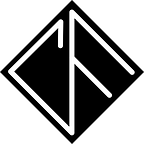User interviews VS Field investigation
Today i would like to share a story with you.
It happened roughly two years ago now, a customer reached out to my previous employer, looking to remake a software that had been abandoned due to several flaws in its conception. However, the business need was still here and the owner was willing to invest one more time in this project, hopefully doing it right this time.
A small team was built based on the client’s budget and i started to work. While UX design was not anywhere in my company at that time ( More about this, and my definition of a UX designer in another article ), i always had a user centered approach, regardless of my roles in projects.
After a decade in customer support, i learnt to value the end user’s perspective.
So i started the definition of need, trying to avoid “missing the target” the best i could, but as you may fear in cases like that, we basically heard :
“Just check the existing software and copy the functionalities”
quickly followed by
“They didn’t make this part correctly, and that part is not working…”
At this point, as time was going by, i realized we couldn’t afford to reverse engineer the whole software and decided to start over, focusing once more on what the customer and future users really needed.
I conducted some interviews with the key users and gathered as many information as i could regarding what was expected from the software.
At this point i had a clear understanding of the WHAT and the WHY but not of the HOW. Then we decided to investigate the user’s intended use on the field.
The software was meant to be used in two very different conditions:
- On the field in places such as a basement, 2 to 3 meters deep holes, on a tablet.
- In the office, on a regular PC with one or two screens.
As you may guess already, the dual platform in itself was calling for a responsive design, adapting the UI to the screen sizes.
The fun part was yet to come.
Our field investigation taught us a lot of valuable information, such as :
- Bad and unstable light situation in basements call for a “night display”
- The user’s tablet provide constraints such as keyboard appearance or touch pen.
- Holding the tablet, there are constraints on the buttons locations to be accessible
It doesn’t look like much, but ignoring this facts would have led us to hidden fields under the visual keyboard or unreadable labels due to contrast changes.
While i can’t imagine conducting a field investigation without any user interview, i definitely think that seeing users interacting in their environnement is the quickest way to see how we can provide the best experience possible and avoid major mistakes in our designs.
I think that will be enough for my first article, thanks for your time. Feel free to share any advice or thoughts regarding my future publications, there is always room for improvement.
A lot more things happened in this project, but i’ll share it with you another day. In the meantime, feel free to reach out directly or by commenting and share your own stories !
